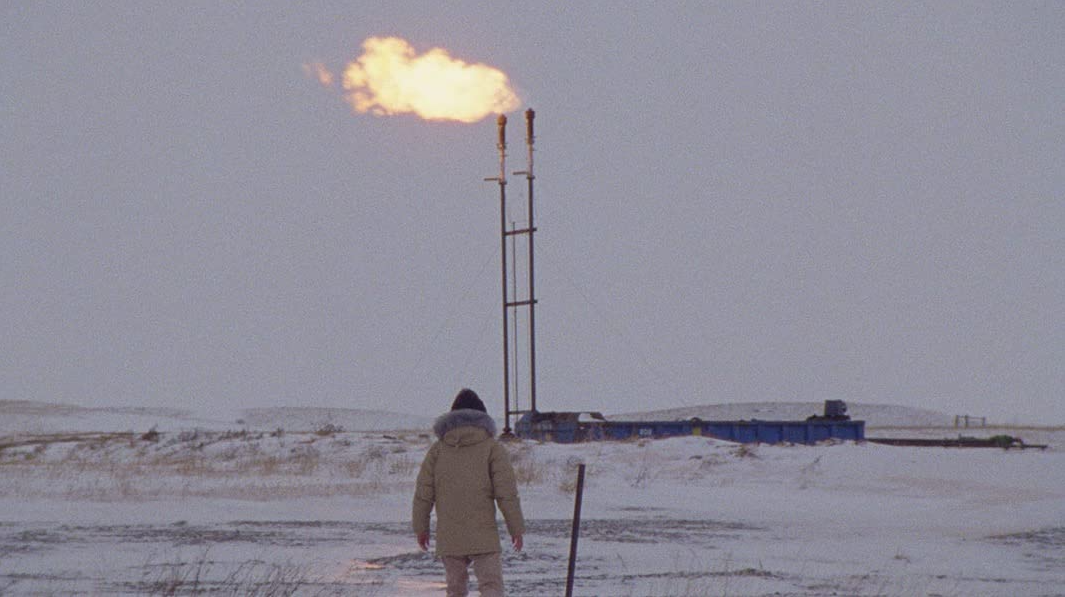
Film Review: How to Blow Up a Pipeline
Film Reviews
How to Blow Up a Pipeline
Director: Daniel Goldhaber
NEON
In Theaters: 04.07
Be careful when searching online for NEON’s latest feature, How to Blow Up a Pipeline, because you just might end up on a terrorist watch list—or maybe, that’s the point of Daniel Goldhaber’s follow-up to his 2018 horror film, Cam. The film is loosely based on Andreas Malm’s 2021 non-fiction book, which presents an argument in favor of property destruction, or “strategic pacifism,” as a logical response for climate activism.
Neither the book nor the movie actually provide instructions on how to create an improvised explosive, the principle of the message remains the same: Passive activism is no longer effectively inspiring the urgent action required to slow climate change. Is How to Blow Up a Pipeline trying to turn you into a radical environmental activist?
How to Blow Up a Pipeline feels like a Safdie brothers movie in tension and grit. The story is cleverly split between the present and a series of flashbacks depicting the preparation leading up to blowing up the pipeline and how each of the members of the activist group became involved in this undertaking. Every part of How to Blow Up a Pipeline moves with a purpose, as if the film itself was a heist. Each role, task and plan are executed with exactness.
The movie begins with each member of the group arriving at a run-down shack in an undisclosed location in the west Texas desert. The group moves quickly to prepare two explosive devices that are each equivalent to 6000 dynamite sticks. How to Blow Up a Pipeline relies on careful exposition, building the story on top of itself as the film steadily narrows in on its conclusion.
Each flashback plays like a short film and is a bit reminiscent of Tarantino’s Pulp Fiction, subtly revealing a little bit of why each of the present activists is dedicated to causing heavy property damage. This begins with Xochitl (Ariela Barer), the presumed leader of the group, whose flashback isolates the moment where she realizes that pacifism is simply not working. Each member seems to have been affected in one way or another by climate change—Xochitl’s mother passed from a severe heat wave, Theo (Sasha Lane) alludes to a terminal diagnosis and more.
Among the team is Michael (Forrest Goodluck), a Native American man who has been radicalized due to the presence of the oil industry near his home. As a Native American myself, it was validating watching a Native American character who subverts the Native American trope to which Hollywood subjects us.
What really impressed me about How to Blow Up a Pipeline is how masterfully the story balances tense moments with expository details. Flashbacks can sometimes be detrimental to the pacing of a movie, but this is not the case in How to Blow Up a Pipeline, where the flashbacks actually help to intensify the present, raising the stakes and giving each character something meaningful to fight for.
No matter where you stand in the debate of global climate change, there’s no denying that you can feel the passion emanating from the screen. Actually, the movie attempts to reach a larger audience by including Dwayne (Jake Weary), an unexpressive, conservative type who walks around with a gun on his hip. Dwayne’s radicalization is ignited by the government commandeering his family’s land to build the pipeline at play.
It might be extreme to think that Goldhaber is attempting to inspire the next generation of radical environmental activists, but that is also kind of the point. The movie rewards you for putting you through the most anxious, nail-biting, will-they-make-it moments. Although things may seem to work out in the end, it is not at all in the way that you would have thought; a plot twist kept me hooked until the very last minute.
Upon finishing How to Blow Up a Pipeline, I felt a renewed enthusiasm to get involved in environmental activism. However, though I’m not quite motivated enough to blow up a pipeline just yet, the sentiment remains that in order to be heard, you’ve got to do more than just yell. You have to disrupt the system. –PJ
Read more larger-than-life film reviews:
Film Review: Air
Film Review: Kompromat